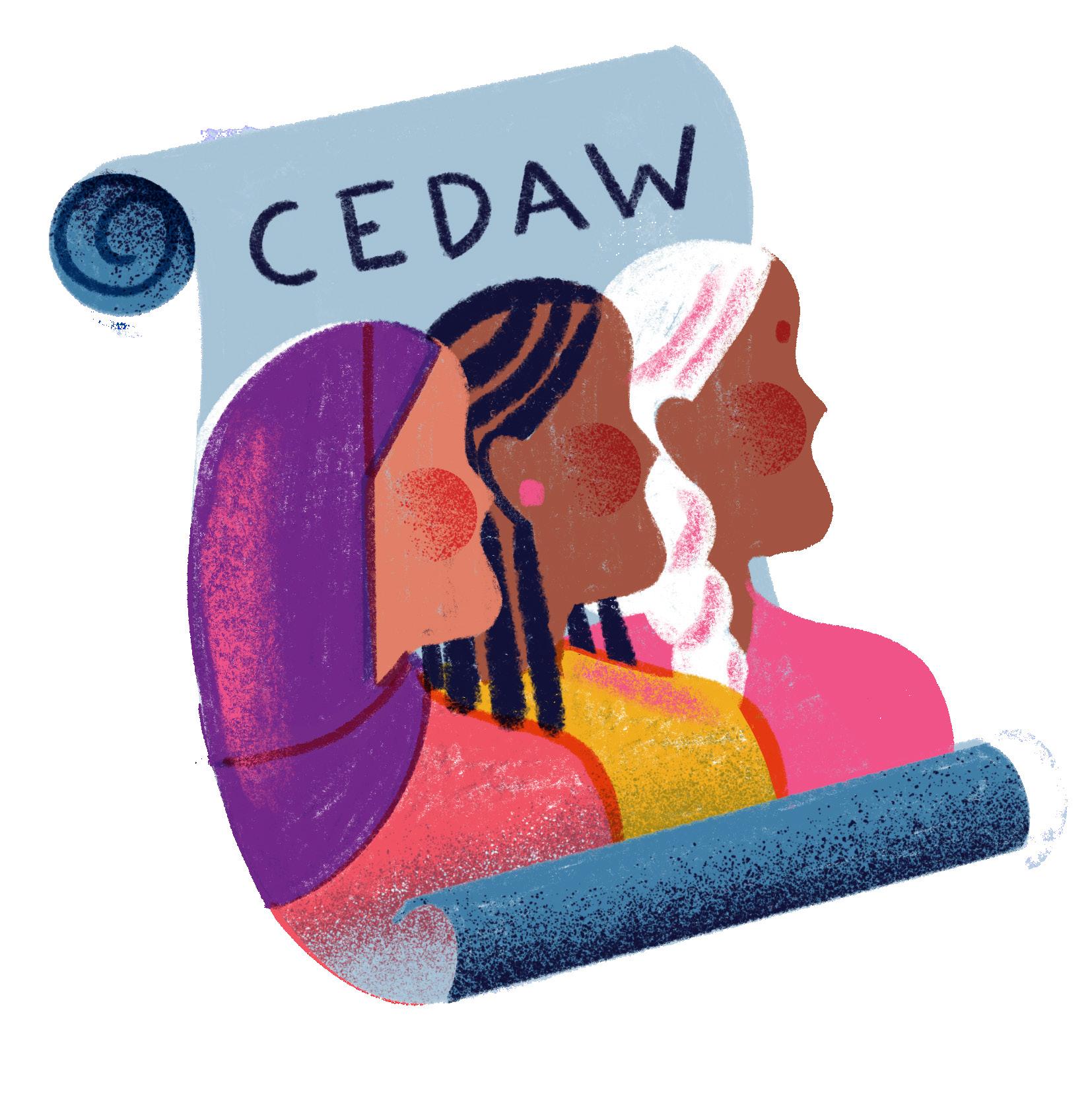
2 minute read
BACKGROUND
Gender inequality damages the physical and mental health of millions of girls and women globally. It is now widely recognised that the causes of women’s ill health often lie in social determinants and unequal power relations, as well as the institutional arrangements that maintain this status quo.(1,2) Despite this recognition, progress towards gender equality has lagged over the last decade, particularly when it comes to health inequalities. At the halfway point of the 2030 Sustainable Development Agenda, no country has achieved the promise of gender equality it envisioned.3 Rather, women’s health and reproductive rights are once again under siege; the global pandemic has eroded hard-fought gains in gender equality, and the space for women’s rights groups to hold the line is closing in many contexts. We badly need public health tools that are powerful enough to change the current trajectory by encouraging governments to act.
Enter the UN Convention on the Elimination of All Forms of Discrimination Against Women (CEDAW). CEDAW is the most comprehensive treaty addressing all areas in which women are denied equality with men; it obliges governments to enact or modify their legislation and constitutions in accordance with the Convention. Almost all UN Member States (193 countries) have ratified CEDAW. At the time of writing, Palau and the United States of America had signed but not ratified CEDAW, while the Holy See, Iran, Niue, Somalia, Sudan and Tonga had not signed or ratified CEDAW.
Advertisement
The findings of our last report revealed that between 1997 and 2020, across the Asia Pacific region, recommendations by the CEDAW Committee requiring governments to implement legislation or policy change made up the highest proportion of recommendations out of all categories (including strategy development, data collection grassroots initiatives, awareness campaigns, women’s leadership and participation, multilateral assistance, health-systems strengthening, multisectoral collaboration, governance and coordination, resource investment and allocation, access to justice, capacity building and reservation removal).
Redressing the balance: Using human rights law to improve health for women everywhere
However, they also made up the highest proportion of recommendations that governments did not acknowledge or failed to implement.4 Governments’ lack of progress on gender equality to date suggests that improvements can be made to the CEDAW review process so that it more effectively supports governments to strengthen the design and implementation of legal frameworks aimed at advancing health for all women.
Since the 1980s, scholars and women’s movements have consistently challenged static conceptions of women and the idea that their experiences of discrimination are homogeneous.5,6 Over the decades since, this work has had a sweeping influence on the application of CEDAW. Intersectionality (the ways in which different aspects of a person’s identity and status can expose them to overlapping forms of discrimination and marginalisation) as a framework for analysing women’s identities and axes of oppression is now a celebrated gold standard in human rights discourse.7,8 Despite this, there has been no systematic attempt to understand and document how the CEDAW Committee incorporates its guidance on intersectionality into recommendations to governments and, in turn, how governments translate these recommendations into CEDAW-aligned laws.4
To address that gap, this report examines data from the CEDAW Implementation Map on Women’s Health, which measures how UN CEDAW Committee recommendations on health have been enacted by governments. It collates all health-related recommendations and determines the nature, scope and extent of their implementation, as reported by participating governments.
THIS REPORT:
1) examines laws that have been developed and implemented in response to CEDAW Committee recommendations, and which relate to four situations that lead women to experience increased vulnerability: GBV; gender-based poverty; refugee, asylum seeker or migrant status; and identification as LGBTQIA+.
2) incorporates the ‘real world’ perspective of CSOs working for women’s empowerment and gender equality as to how these laws have impacted women’s health-related human rights.
3) offers reflections and recommendations from international women’s health and human rights scholars on how the CEDAW review process can prompt governments to take effective legal action towards better health for women experiencing marginalisation.


